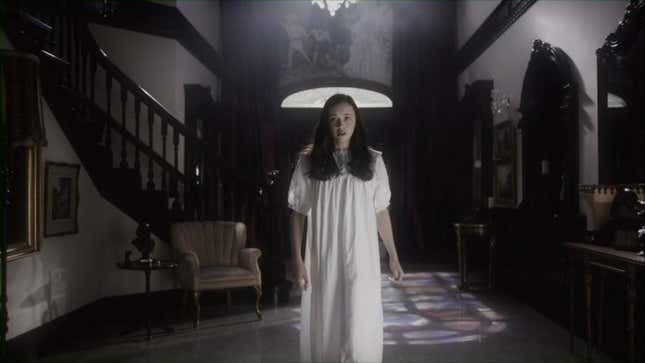Jezebel Summer of Bad Books Club: We've Come To the End
In Depth

Friends and fellow readers, it’s happened—after 500 excruciatingly rendered (and read) pages, over the course of which we discussed womanhood, sisterhood, the female gothic, and why a generation of 12-year-old girls simply could not get enough of this fucking book, our journey through time and myriad family mysteries alongside Audrina Adare has come to an end. Emily and I have had very separate ideas about this book, which is part of what has made this book club so entertaining. Here are our thoughts.
Emily: It’s difficult to read My Sweet Audrina without imagining V.C. Andrews writing it. A woman who’d suffered a fall down a staircase that left her wheelchair-bound and under the care of her mother for the remainder of her life, Andrews’s novels seem trapped in the claustrophobia of adolescence–when parents are lord and master over the lives of young people trying to figure out how much of their identity is inborn and how much has simply been thrust upon them by the rules of the world in which they live. After her father’s death in 1957, Andrews sacrificed for her family by supporting them doing work as a commercial artist, despite being in constant pain that left her unable to leave her childhood home, while her they sacrificed to take care of her. Though there isn’t much record of who V.C. Andrews the person was, it’s difficult not to see her struggle with the concept of sacrifice in the pages of the novel.
Health-wise, she was very much like Vera, one of the many villains in Audrina, whose bones are fragile and who has been left with permanent injuries from childhood. But Audrina is also a prisoner of Whitefern with lingering injuries from childhood, though unlike Vera, whose bitterness over never receiving the love she needed as a child ultimately kills her, Audrina’s entire personality is built around avoiding unpleasant emotions out of consideration for the emotions of others, namely her father’s, and later, her husband’s. We find out in the novel’s conclusion that there was no “first” Audrina. The novel’s one and only Audrina has been denied access to her own pain, by her parents, unable to face the shame of a nine-year-old daughter as the victim of a brutal sexual assault, who simply invented another girl to dump the bad feelings onto and started over by demanding Audrina become a clean slate.
-

-

-

-

-

-

-

-

-

-

-

-

-

-

-

-

-

-

-

-

-

-

-

-

-

-

-

-

-

-

-

-

-

-

-

-

-

-

-

-








































